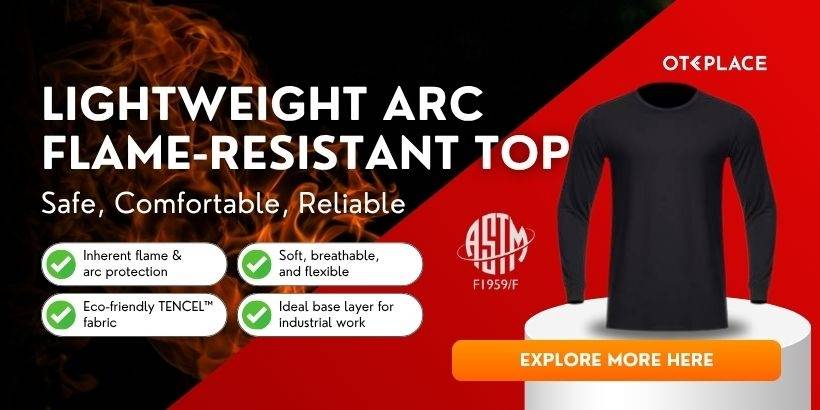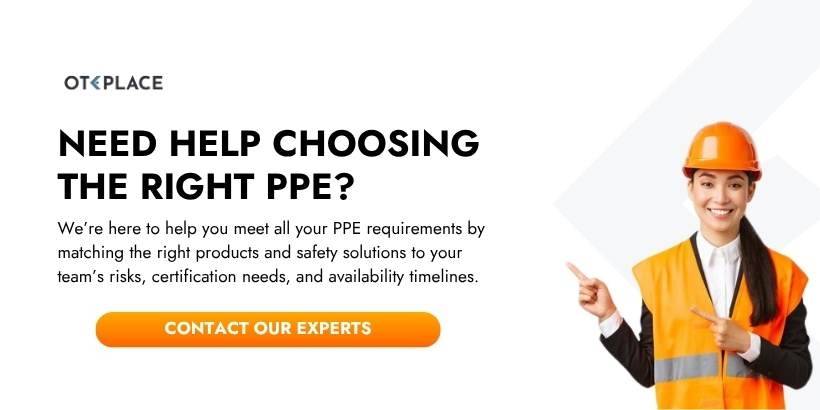Understanding the 6 Main Hazards of Offshore Oil and Gas Rigs
Offshore oil and gas rigs are among the most dangerous working environments in the world. They operate under extreme pressure, handle volatile materials, and face unpredictable weather conditions, all while being located hundreds of kilometers from land.
According to OSHA, 3 in 5 fatalities in the oil and gas industry are caused by “struck by,” “caught in,” or “caught between” hazards, incidents that often happen during drilling, lifting, or maintenance activities. By understanding the risks workers can reduce their chances of injury or even death while they work in hazardous environments.
Table of Contents
-
Main Risks & Hazards When Working on an Offshore Oil Rig
-
Physical and Occupational Hazards on Offshore Platforms
-
Global Standards and Compliance
-
Building a Safer Offshore Future
Main Risks & Hazards When Working on an Offshore Oil Rig
Fire or Explosion Hazards on Offshore Rigs
Fires and explosions are the most common risks associated with working on an offshore oil rig. A fire can quickly spread through and cause extensive damage.
That's why offshore rigs are equipped with firewalls, physical barriers, and flame-retardant materials to prevent fires from happening.
Recommended PPE & Equipment
- Flame-resistant coveralls (FR), aluminized suits, gloves, and hoods
- Automatic fire suppression systems and heat sensors
- SCBA (Self-Contained Breathing Apparatus) for evacuation

Blowout Accidents & Pressure Hazards
A blowout occurs when pressurized drilling fluid escapes from a well, causing a violent geyser of gas and oil. These events can lead to catastrophic fires if not contained immediately.
Companies rely on Blowout Preventers (BOPs), critical safety devices designed to seal wells in emergencies. These devices are placed between the surface and subsurface equipment to contain any possible release of fluids or gasses.
Additional Safety Practices
- Emergency response drills in compliance with API RP 75
- Digital monitoring systems to detect pressure surges
- Pressure-rated PPE and anti-static gear
Collapse and Structural Failures
Offshore platforms are large structures, that are exposed to harsh weather conditions: winds, waves, corrosion, and fatigue. Over time, this can cause the structures to weaken and eventually collapse.
Companies now deploy drone-based inspections and corrosion sensors to detect early signs of weaking.
Preventive Measures
- Structural health monitoring systems
- Emergency evacuation plans and floating stability training
- PPE: flotation suits, helmets, impact-resistant boots
Falling Objects & Lifgting Injuries
Working on an oil rig means working in close proximity to a lot of heavy machinery. In rigs where drilling is the primary means of operations, the heavy vibrations produced by the drilling equipment can cause unpredictable mishaps to occur, requiring workers to constantly be aware of their surroundings.
Essential Personal Protective Equipment
- Hard hats, metatarsal safety shoes, and reinforced-toe boots
- Anti-impact gloves for handling heavy tools
- Shock-absorbing harnesses and fall-protection systems

Unpredictable Environmental Conditions
One of the biggest dangers offshore is the environment itself. The weather conditions on offshore platforms are unpredictable, with hurricanes, strong winds, and storms impacting the seabed and therefore the platform itself.
PPE for Environmental Protection
- Thermal protective suits and flotation devices
- Weather-resistant harnesses and boots
- Offshore survival kits and immersion suits
Chemical Exposure
Offshore platforms rely on numerous chemicals used in the oil extraction process: drilling, fluids, solvents, and hydrocabons. If workers are not careful, they could end up being exposed to them.
Protective Measures
- Full-face respirators with chemical filters
- Chemical-resistant suits, gloves, and goggles
- Portable gas-detection devices and ventilation systems

Physical and Occupational Hazards on Offshore Platforms
1. Noise Hazards
Engines, pumps, compressors, and other machinery produce noise and vibration, leading to hearing damage or even hearing loss.
To protect workers from this hazard, provide EN 352-certified earmuffs and earplugs. Additionally, engineering controls should be implemented where possible such as soundproof enclosures for noisy machinery or regular maintenance schedules.
2. Vibration Hazards
Vibrations can originate from heavy machinery or from natural phenomena's. Prolonged exposure to vibrations can lead to musculoskeletal disorders which can restrict movement and cause pain in the affected areas.
To reduce the risk of vibration pollution use anti-vibration mats when installing heavy machinery on offshore platforms and provide anti-vibration gloves.
3. Asbestos and Radiation Risks
Older offshore installations may still contain asbestos in insulation and piping.
When disturbed, fibers can cause respiratory illness. Similarly, radiation risks exist where nuclear or radioactive sources are used in drilling operations.
4. Electrical Hazards and Arc Flash Risks
Improper wiring or damaged insulation can result in electrocution. To prevent electrocution accidents, workers must be trained in electrical safety practices, including wearing protective clothing such as arc flash boots, insulated gloves, mats and electrical safety sleeves.

5. Helicopter & Transportation Risks
Helicopter travel is one of the primary methods used for transportation to and from offshore platforms. As with any means of transportation, accidents can occur due to mechanical failure or pilot error, but also to extreme weather conditions.
Preventative actions to implement are BOSIET (Basic Offshore Safety Induction & Emergency Training) certification prior to embarking on their journey. BOSIET training includes instruction in emergency response procedures, evacuation techniques, survival at sea exercises, first aid instruction, and more.
6. PPE Problems
PPE is the last line of defense between a worker and hazardous offshore conditions.
| Hazard Type | Recommended PPE | Certifications / Standards |
|---|---|---|
| Fire & Explosion | FR coveralls, aluminized suits, hoods, gloves | EN ISO 11612, NFPA 2112 |
| Fall Protection | Harnesses, lanyards, anchor devices | EN 361, ANSI Z359 |
| Chemical Exposure | Chemical-resistant clothing, respirators | EN 14605, EN 136 |
| Noise & Vibration | Ear muffs, anti-vibration gloves | EN 352, ISO 10819 |
| Impact Injuries | Hard hats, safety boots, anti-impact gloves | EN 397, EN ISO 20345 |
| Electrical Work | Arc-flash PPE, insulated gloves | IEC 61482-2, ASTM F1506 |
8. Pirate Attacks
While pirate attacks are rare in waters near offshore drilling operations, personnel should always be prepared when they happen. To counteract this threat, many companies have implemented anti-piracy protocols such as armed guards onboard vessels entering risky waters or having vessels travel in convoy rather than alone.

Global Standards and Compliance
Offshore operations must comply with international and regional frameworks:
- EN / ISO standards: Europe
- NFPA / ANSI: North America
- IMO & ILO conventions: Global maritime sector
- Regional standards: GCC, LATAM, and APAC oil & gas markets
Regular audits, certification tracking, and vendor compliance are essential to maintaining workplace safety integrity.
Building a Safer Offshore Future
Offshore oil and gas production remains one of the most hazardous yet essential industries in the world. Preventing accidents requires a complete safety ecosystem, engineering design, digital monitoring, continuous training, and reliable PPE working together.
Explore verified vendors and certified products on OTEPLACE, a B2B platform connecting buyers and manufacturers of professional safety equipment. Find suppliers, compare certifications, and request quotes for your offshore operations today.


























